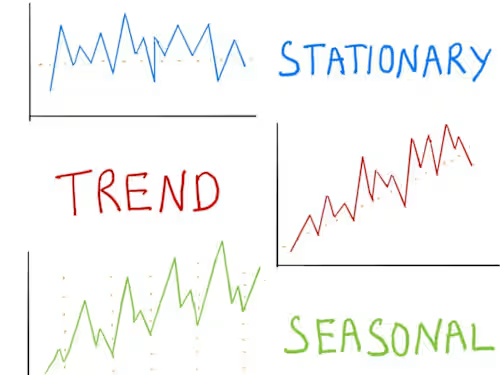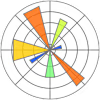
Time Series Analysis
Contact for pricing
About this service
Summary
Process
FAQs
What is Time Series Analysis?
Time Series Analysis involves examining time-based data to identify trends, seasonal patterns, and forecast future values. It helps organizations make data-driven decisions.
What kind of data do you need from me?
I need time-based data in a readable format (e.g., CSV, Excel). If your data exists in a database, I can assist in extracting it as well. You should provide any relevant information regarding the data and specific variables of interest.
How long does the analysis take?
The timeline varies based on the complexity of your data and specific requirements, but typically, the analysis can be completed within a few days (from 1 to 15 days).
What models will you use for forecasting?
I utilize a range of models, starting with traditional statistical methods like ARIMA and SARIMA, and advancing to state-of-the-art machine learning models such as N-BEATS and TSMixer...
Will I receive a report?
Yes, you will receive a comprehensive report detailing the analysis process, findings, insights, and actionable recommendations.
How do you ensure model accuracy?
I evaluate model performance using metrics such as Mean Absolute Percentage Error (MAPE), Mean Squared Error (MSE), and Mean Absolute Error (MAE) to select the best-performing model for accurate forecasts.
Can I interact with the results?
Yes! I deploy the final model using a Streamlit app, allowing you to visualize results, track model performance, and make predictions interactively.
Do I need to have technical knowledge to use the results?
No, I provide user-friendly visualizations and reports that make it easy to understand the insights, regardless of your technical background.
What's included
Holistic time series analysis to identify trends, forecast future values, and gain valuable insights from your time series data.
What I Offer 1- Data Preparation: Address missing values, outliers, and inconsistencies to ensure accurate analysis. 2- Exploratory Data Analysis (EDA) Trend Analysis: Detect long-term trends and patterns within your data. Seasonality Detection: Identify periodic fluctuations and seasonal variations. 3- Modeling and Forecasting Statistical Models: Apply ARIMA, SARIMA, and Exponential Smoothing for forecasting. Machine Learning Models: Use techniques like Nhits, Nbeats, LSTM and Prophet for advanced forecasting. Model Evaluation: Validate model accuracy with cross-validation and error metrics. 4- Anomaly Detection Irregularities: Identify and analyze unusual patterns or outliers in your data. Visualization and Reporting Charts and Graphs: Create dynamic visualizations to display trends, forecasts, and anomalies. Reports: Provide a detailed summary of findings, models used, and actionable insights. Deliverables Forecasting Models: Custom models for predicting future values based on your data. Visualization Dashboards: Interactive charts and graphs showing trends and forecasts. Analysis Report: A comprehensive report including methodologies, findings, and insights.
Skills and tools
Data Modelling Analyst
Data Scientist
Data Analyst

ggplot2

Matplotlib

pandas

Python

R
More services
